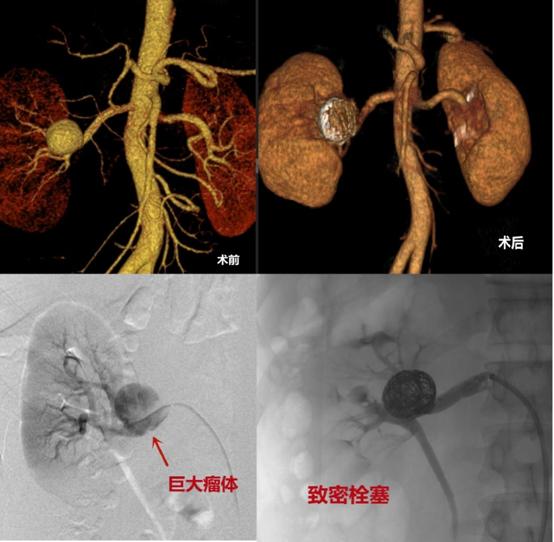Recently, the Vascular Surgery Department of the Second Hospital of Shandong University successfully performed an endovascular embolization procedure for a large renal artery aneurysm through MDT multidisciplinary collaboration, dismantling the "time bomb" inside the patient. The patient recovered well and was discharged smoothly.

The patient, a 39-year-old male, was found to have a right renal artery aneurysm with a diameter of 2.6 cm*3 cm during a physical examination. Director of Vascular Surgery Li Fandong invited the Executive Director of Urology, Wang Shaoyong, and the Deputy Director of the Medical Imaging Center, Zhong Hai, to jointly analyze the imaging characteristics of the patient's aneurysm, identifying the inflow and outflow arteries of the arterial aneurysm. After the MDT discussion, the first choice was the spring coil embolization of the renal artery aneurysm, with open surgery as the second option. The Vascular Surgery team, with the cooperation of the catheterization room medical staff, performed the arterial aneurysm spring coil embolization procedure for the patient. Intraoperative angiography confirmed the accuracy of the preoperative assessment. Nine detachable spring coils were placed into the aneurysm cavity through a microcatheter, effectively sealing the aneurysm. The blood flow in the renal artery remained unobstructed, and the surgery concluded successfully. Postoperative CT re-examination showed complete embolization of the renal artery aneurysm, with the main trunk and branches of the renal artery remaining unobstructed.
The incidence of renal artery aneurysms is 0.1%, making it one of the common visceral artery aneurysms. It involves localized or diffuse dilation or bulging of the arterial wall, and the growth of the aneurysm is slow. The majority of patients with renal artery aneurysms do not exhibit clinical symptoms or signs, while a minority may present with manifestations such as proteinuria, hypertension, and lower back pain. However, when the diameter exceeds 2cm, the risk of rupture increases, with a mortality rate as high as 80% upon rupture.Currently, the treatment of renal artery aneurysms has gradually shifted from traditional surgery to minimally invasive endovascular therapy. Depending on the anatomical features of the aneurysm, various embolization techniques are employed, including simple coil embolization, balloon-assisted or stent-assisted coil embolization. Detachable coils are primarily selected for this procedure.
In recent years, the Vascular Surgery Department of the hospital has closely followed the trend of discipline development in the field of minimally invasive intravascular treatment. They have accumulated extensive experience in the intravascular treatment of visceral artery aneurysms. With the support of MDT, they formulate rational treatment plans to provide high-quality medical services for clinical patients more effectively.

